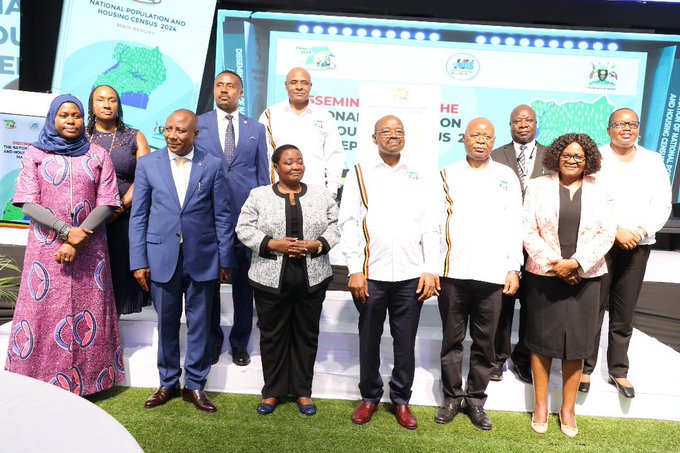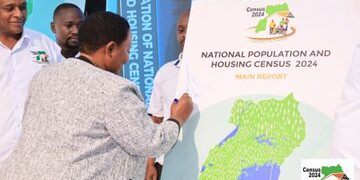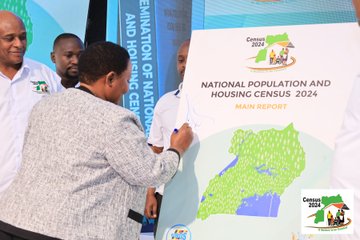At least 74% of people in Uganda can read and write, according to the National Population and Housing Census 2024 Main Report launched on Thursday by Prime Minister Rt Hon Robinah Nabbanja at the Serena Hotel Kampala.
The total population for Uganda as of May 2024 based on the National Population and Housing Census 2024 stands at 45,905,417 persons with the male population recorded at 21,566,736 while the Female is recorded at 24,338,681 persons.

The Population growth rate dropped slightly from 3.0 percent in 2014 to 2.9 percent in 2024.
According to population distribution, the Buganda sub-region had the largest population of 13.0 million persons, followed by Busoga (4.4 million persons) while the Karamoja sub-region had the smallest population of 1.4 million persons.
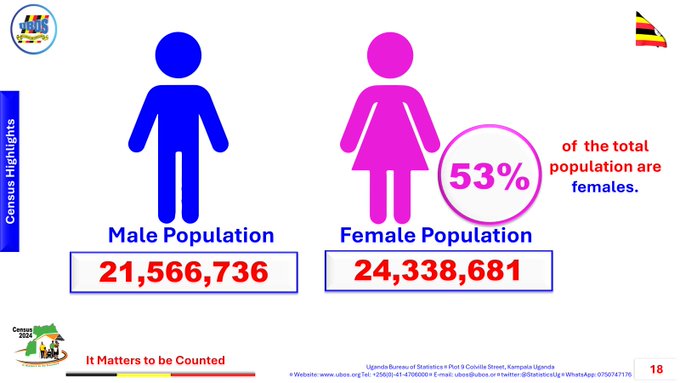
Uganda’s Population Density as of 2024 was 224 persons per square kilometre, an increase from 123 people and 173 people per square kilometre in 2002 and 2014, respectively.
The daytime population in the cities stood at 4.2 million persons with the highest share in Kampala Capital City (42.8%) and the lowest daytime population in Soroti City (3.2%).
Children aged between 0-17 years form the largest part of the population standing at 50% followed by the youth between 18-30 years at 23.5% while older persons make up 5% of the total population.
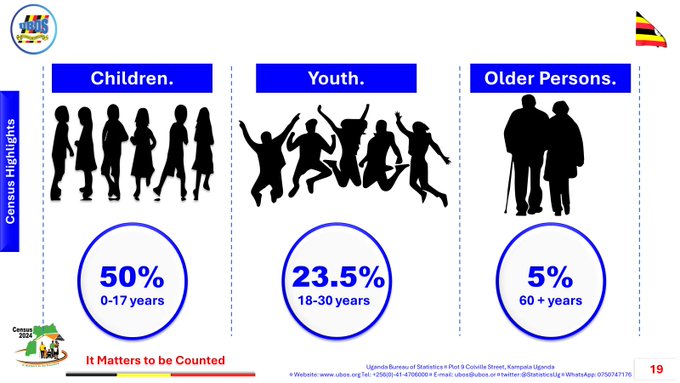
Literacy rate rising
“74% of the population are literate,” said Uganda Bureau of Statistics (UBOS) Executive Director, Dr Chris Mukiza.
Literacy is defined as the “ability to read with understanding and write meaningfully in any language”.
The NPHC 2024 collected information on the literacy status of household members aged 10 years and above.
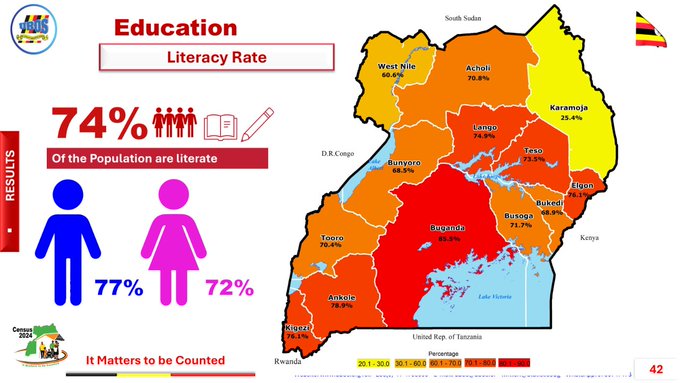
Dr Mukiza who was flanked by the State Minister in charge of Planning, Hon. Amos Lugoloobi and UBOS board chairman, Dr Albert Byamugisha, said 77% of these are males and 72% are females.
There was a slight increase in the literacy rates from 72 percent in 2014 to 74 percent in 2024.
Buganda sub-region had the highest literacy rate (86%) while the Karamoja sub-region had the lowest literacy rate (25%). Ankole sub-region had 79 percent, while Kigezi and Elgon sub-regions had 76 percent each.
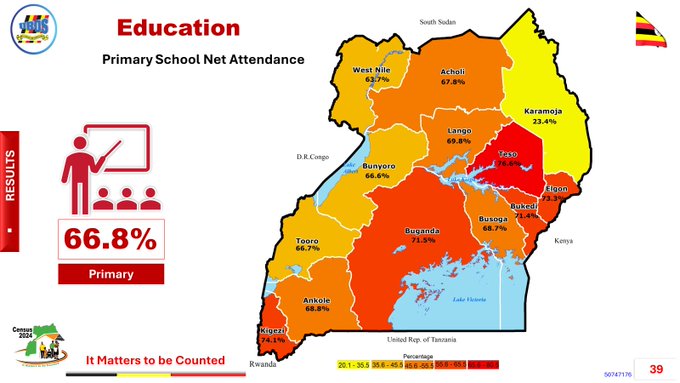
According to the report, 20% of the population aged six years and over had never been to school by the census year.
The Gross Attendance Ratio for primary schools was 101.3% and 32% for secondary schools while the Net Attendance Ratio for primary schools was 66.8 percent and 22.3% for secondary schools.
The majority of Ugandans have either only acquired some primary education or no formal education, about 30% attained some primary-level education.
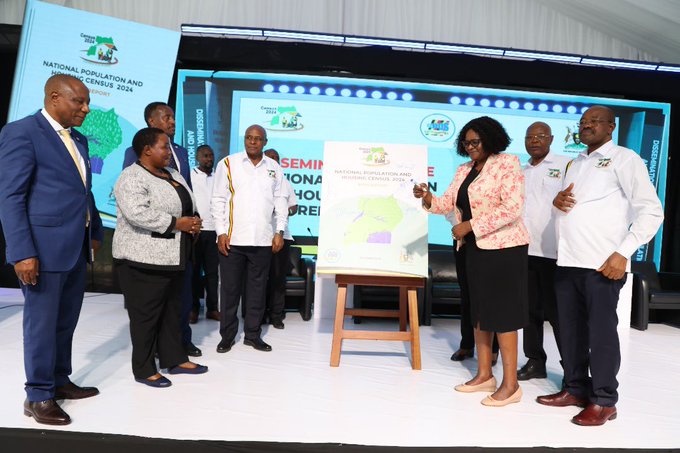
“Nearly 8 in 10 males (76.6%) and 7 in 10 (71.6%) females were literate. 73.7% of the population aged 18 years and above was literate,” noted Dr Mukiza.
